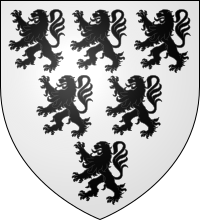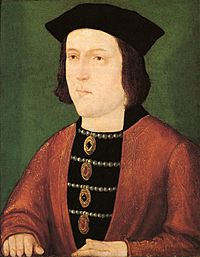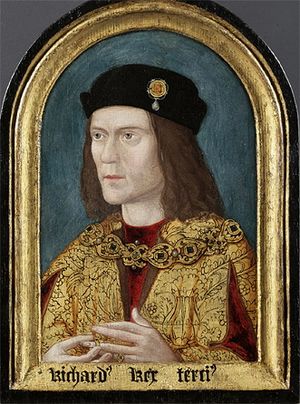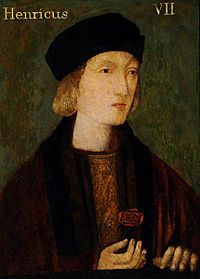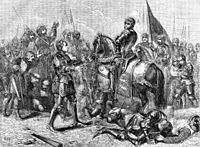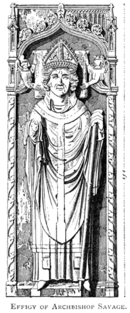John Savage (soldier) facts for kids
Quick facts for kids
John Savage
|
|
|---|---|
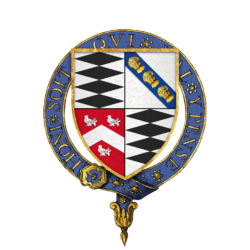
Arms of Sir John Savage as a Knight of the Garter
|
|
| Born | c.1444 Cheshire, England |
| Died | October, 1492 (aged 47–48) Boulogne, France |
| Buried |
The Savage Chapel, St Michael's Church, Macclesfield, England
|
| Allegiance | England |
| Rank | Knight banneret |
| Battles/wars | Wars of the Roses
English expeditionary force to France
|
| Awards | Knight of the Order of the Garter Knight of the Bath |
| Spouse(s) |
Dorothy, Lady Savage
(m. 1470) |
| Children | Sir John Savage, George Savage (ill.), Alice Savage, Felicia Savage, Ellen Savage, Maud Savage |
| Relations | Thomas Stanley, 1st Baron Stanley (grandfather) Sir John Savage (father) Lady Catherine Savage née Stanley (mother) Archbishop Thomas Savage (brother) Thomas Stanley, 1st Earl of Derby (uncle) Sir William Stanley (uncle) George Stanley, 9th Baron Strange (cousin) The Savage baronets The Viscounts Savage The Earls Rivers The Savage family |
Sir John Savage (1444–1492) was a brave English knight and military leader in the late 1400s. He is famous for fighting in the Wars of the Roses, especially at the Battle of Bosworth Field in 1485. There, he led part of the army for Henry Tudor (who became King Henry VII). It is said that Sir John even defeated the Duke of Norfolk in a fight during this battle.
Before Bosworth, Sir John supported King Edward IV from the House of York. He helped Edward win battles like Battle of Barnet and Battle of Tewkesbury in 1471. He also joined an English invasion of Scotland in 1482. But after Edward IV died, the new king, Richard III, didn't trust the Savage family. This was because they were connected to the Stanley family, who were linked to Henry Tudor. So, Sir John Savage became one of the important people who asked Henry Tudor to invade England in 1485. This led to the Battle of Bosworth Field, where Henry Tudor won and became king.
After Henry VII became king, Sir John Savage continued to serve him. He helped the king put down rebellions and fought in the final battle of the Wars of the Roses, the Battle of Stoke Field in 1487. Sir John was also a member of the King's special advisory group, the Privy Council. In 1492, he joined King Henry's army in France and sadly died during the Siege of Boulogne.
Contents
Sir John Savage's Family History
John Savage was born around 1444. His father was also named Sir John Savage (1422–1495). His mother was Lady Catherine Stanley. Her father was Lord Thomas Stanley, a very important person. Sir John Savage died before his father, so he never took over the family lands, like Clifton Hall.
The Savage family had lived in Cheshire for a long time. Sir John's great-great-grandfather, also named Sir John Savage, married Margaret d'Anyers. She owned lands around what is now called Rocksavage.
Sir John was the oldest of ten sons and had five sisters. His younger brother, Dr. Thomas Savage, later became the Archbishop of York, a very high-ranking church leader. Four of his other brothers also became knights. His sisters married into other important families in the area. His uncles were Lord Thomas Stanley (who became the Earl of Derby) and Sir William Stanley. His cousin was George Stanley, 9th Baron Strange.
Early Career and Changing Loyalties
Serving King Edward IV
Sir John Savage became a Knight of the Bath in 1465. This was a special honor given by King Edward IV. Sir John fought for King Edward and the Yorkists in the Battle of Barnet and the Battle of Tewkesbury in 1471. He also joined Edward's brother, the Duke of Gloucester, in an invasion of Scotland in 1482. In Scotland, he was made a Knight banneret. This meant he was a knight who could lead his own soldiers under his own flag.
Sir John became close to King Edward IV. He served the king in his royal household. He was also put in charge of Hanley Castle. When King Edward died suddenly in 1483, Sir John was one of the important people who carried the king's coffin at the funeral.
Doubts Under King Richard III
After King Edward died, his brother, the Duke of Gloucester, became King Richard III. The Savage family was viewed with suspicion by Richard. This was because they had supported Edward IV. Also, they were connected to the powerful Stanley family, who were linked to Henry Tudor.
Even though the family was watched closely, Sir John Savage became the Mayor of Chester in 1484 and 1485. Many of his brothers also became "freemen" of the city. But Sir John began to secretly plan against King Richard. He was one of the important men who invited Henry Tudor to invade England. Henry Tudor claimed the throne through his family line, the Lancastrians. Sir John's uncle, Lord Thomas Stanley, might have also been involved in these plans. Sir John's brother, Thomas, who was studying abroad, likely helped connect the Savages to Henry Tudor.
In August 1485, Sir John's plans were found out. King Richard declared him a traitor. Richard also held Sir John's cousin, George Stanley, as a hostage. This was to try and control Lord Stanley.
Supporting Henry Tudor
The Battle of Bosworth Field
When Henry Tudor landed in Britain, Sir John Savage immediately joined him. Sir John gathered many troops under his command. He marched with Henry through Wales. They fought together at the Battle of Bosworth Field.
At first, Sir John and his men were with his uncles, Lord Thomas Stanley and Sir William Stanley. His uncles were waiting to see which side would win before joining the fight. But Sir John decided to join Henry's army directly. He was put in charge of the left side of Henry Tudor's forces. Many of his own men fought there. They wore the Savage family's special white hoods. Old songs describe them:
-
- Sir John Savage, that hardy Knight,
- deathes dentes he delt that day
- with many a white hood in fight,
- that sad men were at assay.
And another song says:
-
- Sir John Savage, 1500 white hoods,
- for they will fight and never flee
During the battle, it is said that Sir John Savage personally defeated the Duke of Norfolk. The Duke was trying to escape. Sir John also captured the Duke's son.
Henry Tudor's army won the battle. Sir John led his part of the army to victory. His uncle, Sir William Stanley, saw King Richard separated from his main army. Sir William led his men to attack Richard, surrounding and killing the king. Sir John's other uncle, Lord Stanley, could not join the fight right away. King Richard was holding his son, Lord Strange, as a hostage. Richard threatened to kill Strange if Stanley joined Henry.
Rewards for Loyalty
After the victory, Henry Tudor received King Richard's crown from Sir John's uncle, Lord Stanley. Henry was crowned King of England right there on the battlefield. He became King Henry VII.
Sir John Savage was greatly rewarded for his help. He received many lands that had been taken from King Richard's supporters. These lands were in several counties, including Nottinghamshire and Derbyshire. The king gave him these lands because Sir John had bravely fought for him. He brought many of his family, servants, and friends to help the king.
Sir John's brother, Dr. Thomas Savage, also gained a lot from Henry becoming king. He had been a scholar. Now, he became an important diplomat, representing England in other countries. He later became a high-ranking church leader. He served as a bishop and then became the Archbishop of York in 1501. This made him the second most important church leader in England. Both Sir John and his brother Thomas became part of the King's close group of advisors.
Stopping Rebellions
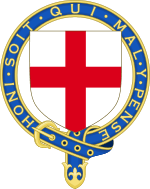
In 1486, King Henry sent Sir John Savage to arrest Sir Humphrey Stafford and his brother Thomas. They were leading a rebellion against the new king. Sir John led 60 armed men to Culham. The Stafford brothers were hiding in a church there, claiming "sanctuary." This was a old rule that meant people could be safe from arrest inside a church.
Sir John's men took the brothers out of the church by force. The church leader was very upset. But when the brothers were put on trial, the judges said that sanctuary did not protect people who had committed treason (betraying the king). King Henry ordered Sir Humphrey Stafford to be executed. Thomas Stafford was pardoned. This event was important because it led to changes in the rules of sanctuary. The Pope agreed that people could not use sanctuary to hide after committing new crimes.
The Final Battle of the Wars of the Roses
Sir John Savage was one of the main cavalry leaders at the Battle of Stoke Field in 1487. This is considered the last battle of the Wars of the Roses. Some Yorkists tried to put a young man named Lambert Simnel on the throne, claiming he was the true king. The battle was a big victory for King Henry. Almost all the main Yorkist leaders were killed. After this, battles between the Yorkist and Lancastrian families stopped. Lambert Simnel, because he was so young, was not executed. He was given a job in the royal kitchens instead.
Sir John Savage was rewarded even more for his service. In 1488, King Henry made him a knight of the Order of the Garter. This is the highest order of knighthood in England. Only 24 knights can be part of it, and the monarch chooses them.
Expedition to France
In October 1492, another young man, Perkin Warbeck, claimed to be the true king of England. King Henry believed France was supporting Warbeck. So, Henry gathered a large army to go to France. Sir John Savage raised a group of 366 men for this army. This was one of the largest groups of soldiers in the expedition. Sir John was one of only a few men in England who could gather such a large force. In mid-October, Henry and his men crossed the English Channel and landed in Calais.
Death and Lasting Impact
The Siege of Boulogne
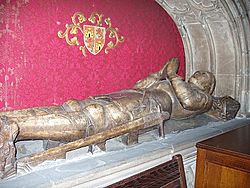
King Henry VII's army went to Boulogne and began to attack the city on October 18, 1492. Sir John Savage was killed during this attack. He was riding around the city walls with another knight, Sir John Riseley. They were checking the defenses to plan their attack. But they were ambushed by enemy soldiers. Even though they were greatly outnumbered, Sir John Savage refused to give up. He fought bravely until he died. His actions created enough of a distraction for Sir Riseley to escape.
The Outcome of the Siege
The attack on Boulogne was a success for King Henry. It led to a peace treaty with France. As a result, Perkin Warbeck was forced to leave France. France also agreed to pay Henry a large sum of money. Sir John Savage was one of only three known soldiers who died during the siege.
Perkin Warbeck was later captured in England. He was executed after trying to escape. Sir John Savage's uncle, Sir William Stanley, was also executed later. He was accused of supporting Warbeck, even though the evidence was not strong. The threat from Warbeck was seen as so serious that even those who had helped Henry become king could not be spared if they were suspected of disloyalty.
Sir John Savage's Burial
Sir John Savage's body was brought back to England and buried. Later, his body was moved to the Savage Chapel. This was a new family chapel built by his brother, Archbishop Thomas Savage, at St Michael's Church between 1505 and 1507. His tomb and a statue of him are still there today. Sir John died when he was very important to King Henry. His death came as the Tudor dynasty was becoming firmly established on the throne, thanks in part to Sir John's help.
Family Life
Sir John Savage married Dorothy, the daughter of Sir Ralph Vernon. They had one son, Sir John Savage (1470–1527). This son became an ancestor of later important families, like the Earls Rivers. Sir John and Dorothy also had four daughters: Alice, Felicia, Ellen, and Maud. Sir John also had a son named George.


